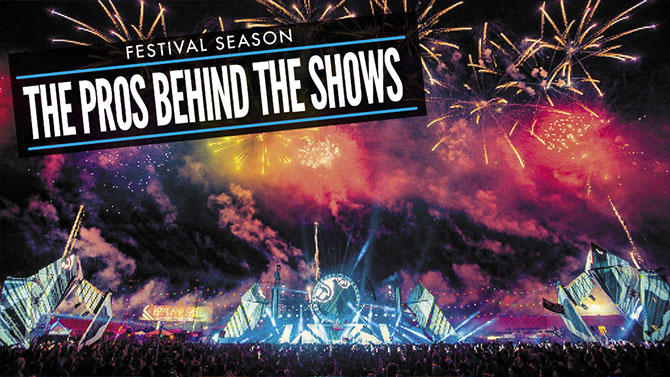11 Questions with a Multimedia Festival Stage Designer
"Most of the time design begins at close to impossible… you must connect it to a logical structure, making sure it functions with redesign, then testing for viability. I believe design gets stagnant if you constantly tie it only to what you perceive is possible."
Heather Shaw is the founder and CEO of Vita Motus Design Studio. She started her career designing concept cars for Audi, but the pull of the stage was too much, and she transitioned to stage design where she and her firm have created stunning sets for Coachella, EDC, and Pharrell Williams.
Hello, Heather! Tell us about yourself and Vita Motus. How did you make the transition from industrial and automotive design to stage design?
After graduating with a design degree in Industrial / Transportation, I began my career designing concept vehicles for VW Audi. In my off time, I collaborated with friends to create festival stages, primarily to satisfy the urge to experiment beyond global automobile marketing trends. I officially opened Vita Motus in 2006; it began as what I thought would be an industrial design firm. When the recession hit, the auto industry became even more difficult for designers at satellite studios, and many of us lost our jobs. From there, I chose to follow the entertainment passion and let the design studio take over.
What were some of the first shows or festivals that you worked on? How has your work changed and evolved since?
![]()
Most of my early collaborations were with the Do Lab for Coachella and other renegade festival stages. It was extremely DIY Definition:
Definition:
DIY (Do It Yourself): Building equipment from scratch or from kits., fabricating and building everything ourselves. At that time, Do Lab was my one major entertainment client, so all of the design fit inside their distinctive brand style. With more varied clientele came new styles, technology, and the ability to outsource fabrication.
What are the differences between stage design for indoor and outdoor performances? How does the physical space of the venue impact your ideas?
Depending on the building, it can be easier to rig Definition:
Definition:
A combination of equipment put together for a purpose. inside and you don’t have to deal with the unknown of weather, but it also puts you in a box, and so the scale of the design is usually affected.
Your design incorporates a lot of lighting elements and effects. Do you typically work with a lighting designer during ideation or as the stage is being built? How about sound…do you work or consult with a sound engineer? How have you been able to so seamlessly meld the elements of sound, light, video, etc to create a cohesive and immersive experience for the audience?
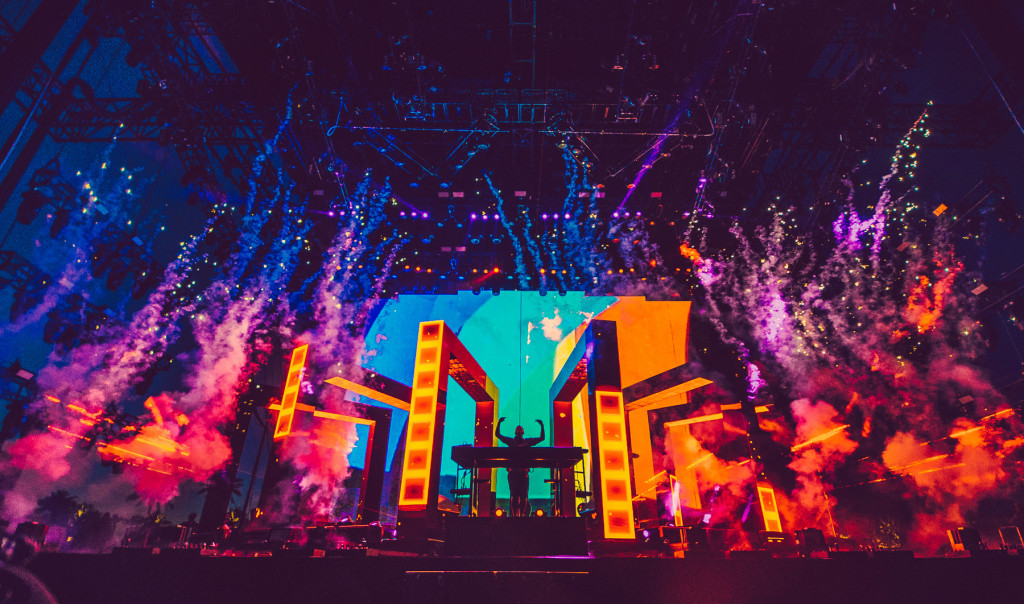
We first research and develop an innovative concept, create the design and then add our own sculptural lighting. Only at that point do we collaborate with a lighting designer who can work within that sculptural style. It’s really about artistic collaboration, with both lighting and sound design.
What about the theme of the festival, the personality of the artist or the genre of music? How much influence do those factors have on the stage design? How do you keep each project fresh and distinct from others you’ve created?
Those are all definite factors, but in the process of designing any festival environment, my first focus always comes back to the attendees' experience, meaning, what are they looking for and how can my design help get them there. It’s about making sure the design supports and encourages full enjoyment of the experience.
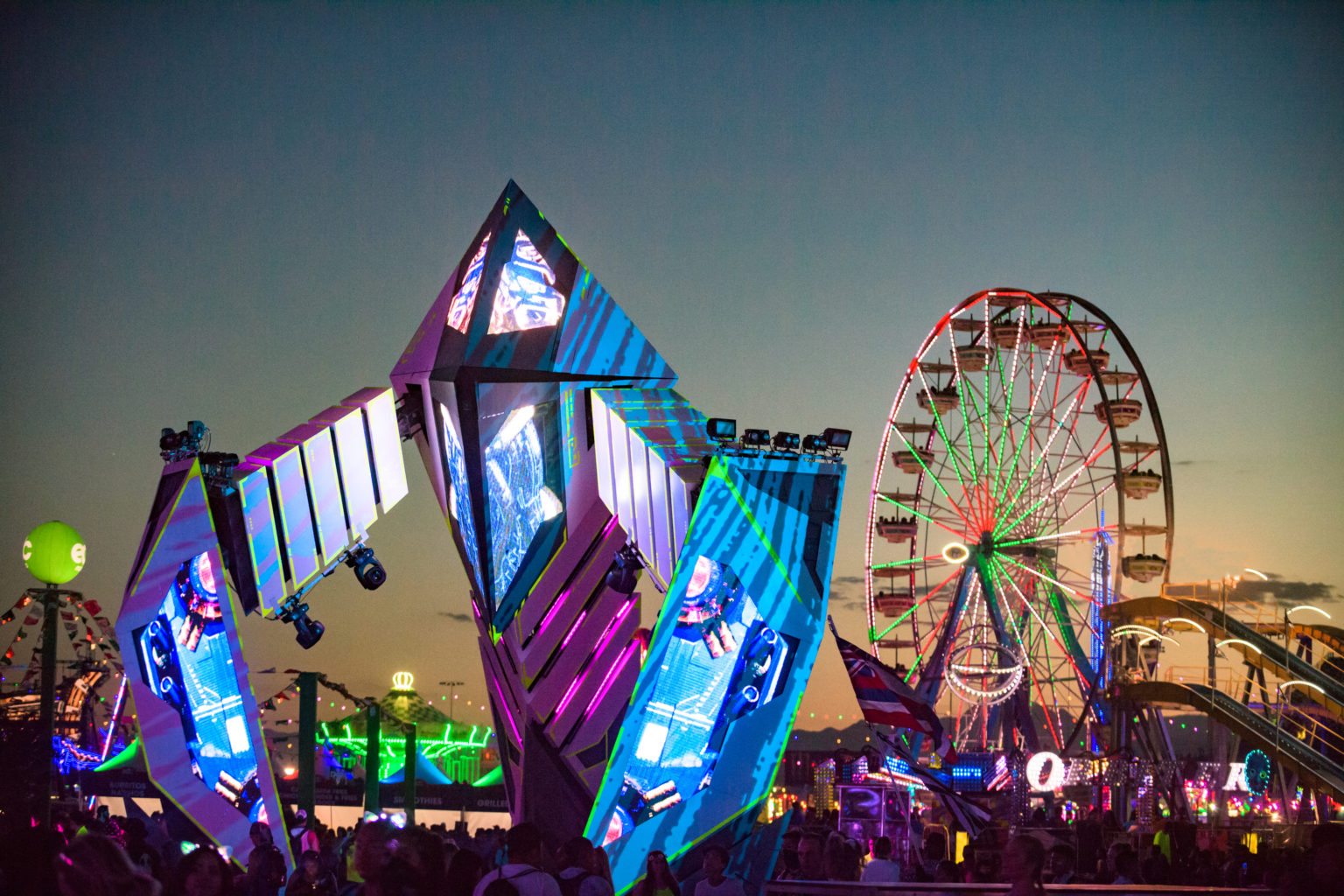
How much involvement do the artists you’ve worked with have with your designs? Have you ever had any major creative disagreements? If so, how were you able to resolve them?
It really depends on the artist. Some don’t have any initial direction, some are far more involved. As with anything creative, there are alignments and disagreements, but I think it’s my job to cater to my client’s needs while also advocating for the best possible design. It always works out in the end because it has to!
Have you ever come up with a concept that has been difficult or impossible to achieve due to budget or time restrictions or limitations with current technology? Basically, have you ever had an amazing idea that couldn’t be done or that had to be modified to make it possible?
Most of the time design begins at close to impossible. The more you shift outside of what is comfortable, the more you find what is new. Once you achieve innovative, crazy concepts, you must connect it to a logical structure, making sure it functions with redesign, then testing for viability. I believe design gets stagnant if you constantly tie it only to what you perceive is possible.
What stage design or designs are you most proud of and why?
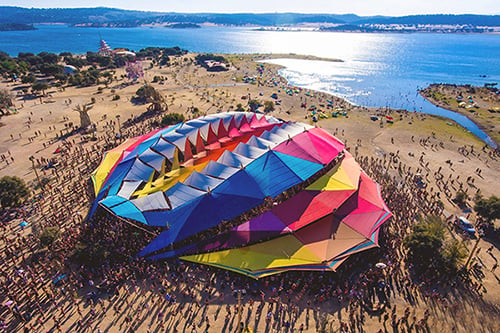
I think my favorite projects came from our collaborations with the Do Lab on the Dance Temple stages for the Boom Festival in Portugal, as well as the high tech mapping projects.
A festival may have one unifying theme, but many festivals have 20 or more acts on the same stage. How do you ensure a single-stage design works for multiple bands with very different sounds and audiences?
It depends on the festival. Some festivals want a cohesive theme throughout the grounds, some want to adhere to the individual identity of the stage, and then there are some who want the stage to be a blank canvas for the performing acts. In other words, the festival decides how much the artist gets to bring their own brand to stage.
Your work is very cutting edge and seems to push the boundaries of current technology. How do you and your team stay up-to-date on the latest advancements in tech?
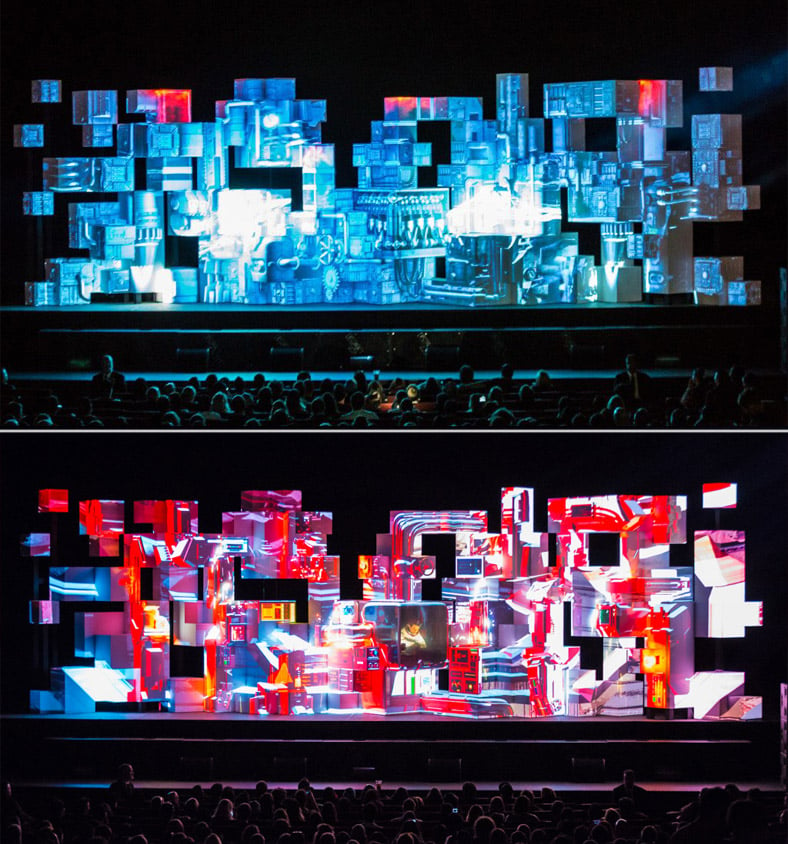
Thank you for saying that. We are in constant new tech research and development mode, but especially on the front end of projects. I’m very interested in the evolution and exponential growth rate of technology. It is inspiring to know that most anything is possible or will be possible.
Do you have any advice or tips for other stage designers, sound or lighting pros about working a music festival? And what are some common mistakes to avoid for those who might be just starting out?
Follow your passion, value yourself and what you do. Creativity is your product and should not be given out for free unless it’s truly meant as a gift.
Well, wow, Heather. Thanks! We’ve got to be honest, Vita Motus seems like it’s from the future — which, I guess is the point. We’re fans now, and will definitely be following your work.
If you, the reader, are interested in working with this multi-discipline design firm, visit vitamotus.com to learn more and prepare to have your mind blown!
And if you’re a Sound Engineer, Lighting or Stage Designer with festival experience, and would like to be featured in “Pros Behind the Shows” drop us a line.



